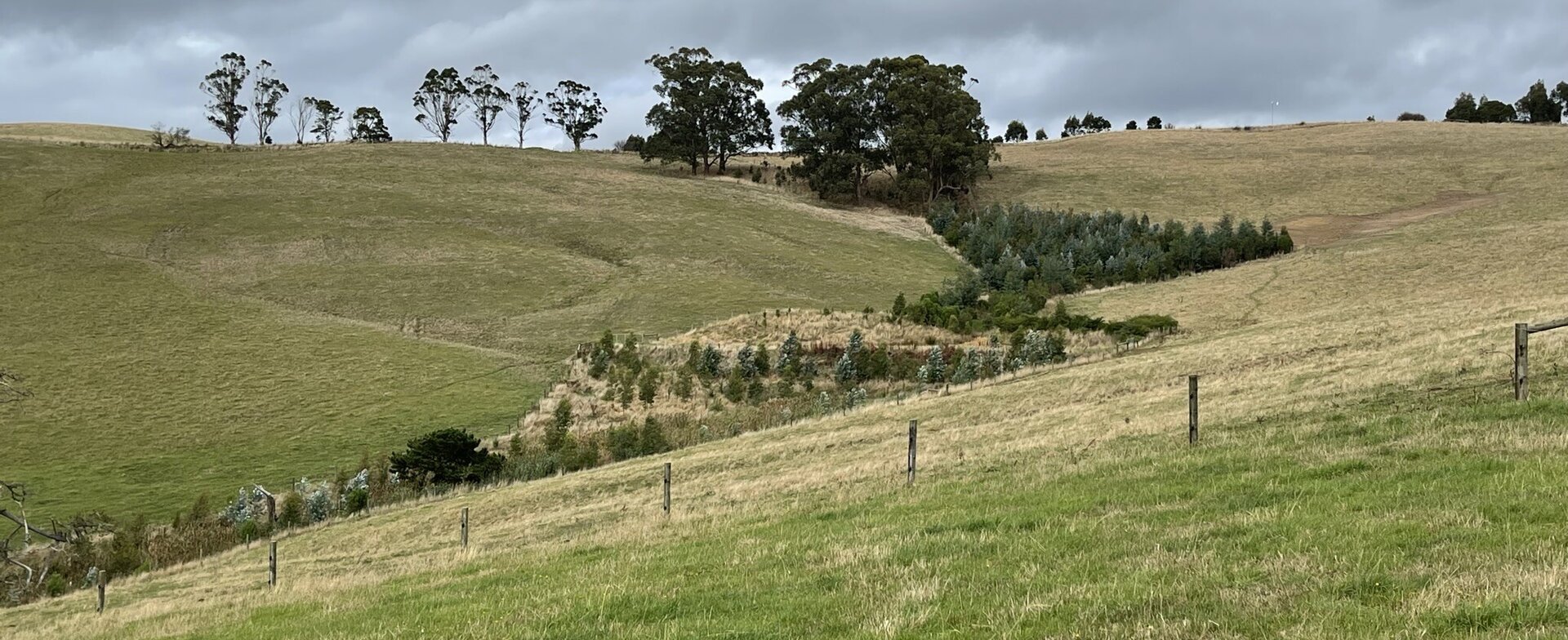Maintaining your revegetation
Tips for maintenance of a revegetation site
Patience!
Plants that have been direct seeded will take time to establish and the site is likely to look untidy at first (depending on how thorough your weed control was).
Don't be too impatient - even in moderate seasonal conditions the key to success is good site preparation before seeding or planting.
Inspect germination of direct seeding sites
After direct seeding the first inspection is not usually needed for four to six weeks germination (depending on the season)
Different species will germinate at different times. Some will germinate many months after sowing, and others may come up more than a year later.
Pest animals
Check the site when seedlings are at the two-leaf stage for large numbers of pest animals, particularly Red Legged Earth Mite and in wet years, slugs. Implement pest control as required.
Check seedlings for evidence of grazing/browsing and apply appropriate management if required, for example, protection from wallabies.
Post weed control
Post-planting/seeding weed infestations will be reduced if the site preparation has been carried out thoroughly.
Fencelines
Check, when convenient, that fencelines are stock proof, and, for electric fencing, not shorting out (ensure you include a gate to get the stock out!).
Plant losses
If required, replace any plant losses as soon as conditions permit (except if it is a farm forestry planting that will be thinned).
Thinning
Thinning is likely if it is a farm forestry site. However, if the purpose is to achieve a natural effect, generally leave the seedlings to sort themselves out. This is especially important for direct seeding.
Tree guards
If tree guards have been used, maintain them and remove as needed. Be mindful if using plastic guards to remove them as soon as practicable. You can reuse them, or pass them on to others. Don't create plastic pollution.
Watering
Watering at the time of planting establishes good root to soil contact and helps over come transplant shock. If this is not possible firming around the seedling with your feet can help. If it is a very dry year and you can, follow up watering can help keep plants alive.
Weed management options for the second season
Weed management options following seeding or planting should aim to minimise weed competition for one year (ideally two years for farm forestry) and be tailored to the site conditions. In some cases, a compromise between plant growth and weed control may be necessary. For example, in saline soils where the reduction in the water table is the goal, bare ground should be avoided.
If the site has been prepared well in advance,weed infestation problems should be largely reduced. The following information outlines some of the weed management options available.
Manual weed control
Pulling weeds out by hand or digging them out with a hoe, along or beside the seeding or planting line may be an option for small scale projects. Always try to avoid disturbing the roots of the sown or planted seedlings.
Overspraying
Selective herbicides that target, for example, grassy weeds, may be used as an over spray over the seeding or planting line, particularly after summer-early autumn rain events.Overspraying is a method regularly used in direct seeding. Take due care and ensure the sprayer is accurately calibrated.
Shielded or directed spray
An alternative to over spraying is the use of a shielded or directed spray. This technique will eliminate any natural regeneration of desirable species between the seeding and planting lines. Care must be taken to avoid spray drift. Success will depend on the accuracy of the operator and the effectiveness of the shield.

